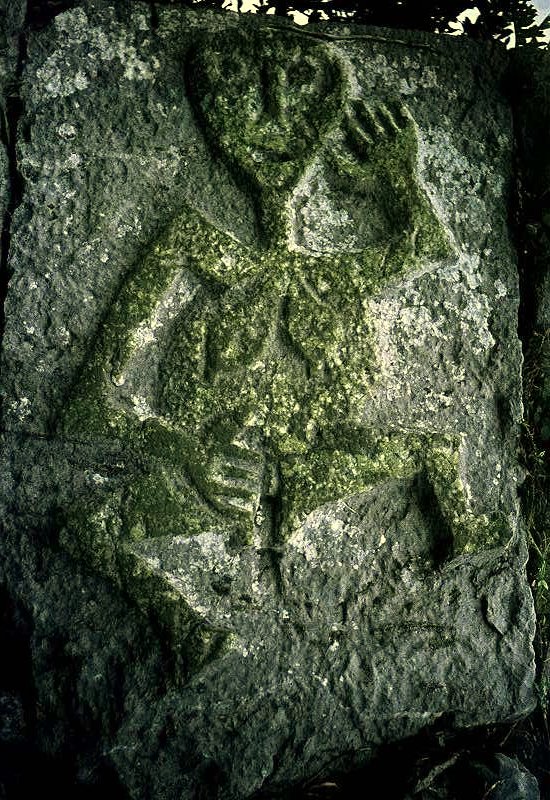
Kiltinan or Kiltinane Church (Tipperary)
This figure was stolen in 1990.
As at Tullavin Castle, one hand is up to the head,
another indicates the vulva,
and the jig-dancing stance is nicely asymmetrical.

It was set sideways on a quoin.
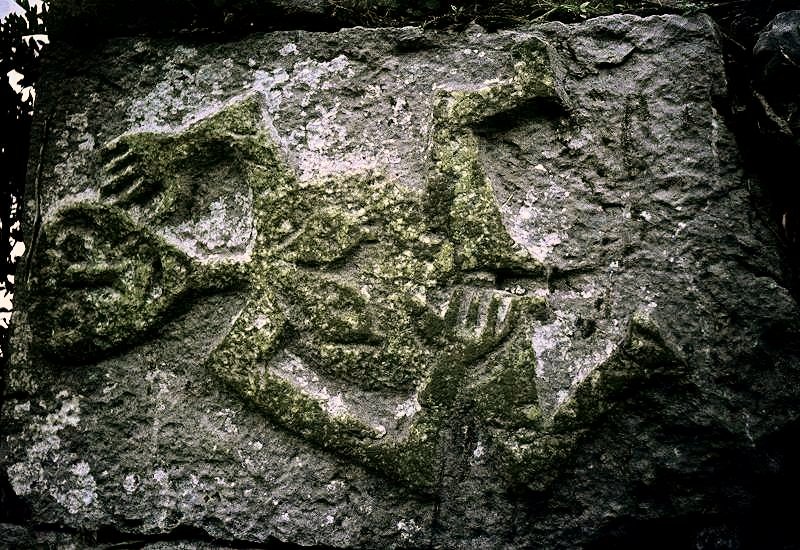
compare with the Indian motif of the dancing god or goddess >
The vogue for setting these figures sideways may have been influenced by figures
of devils, tempters and sinners,
also set sideways, on the friezes which accompanied the corbel-tables of some
English and French Romanesque churches
as at Villers-Saint-Paul (Oise)...
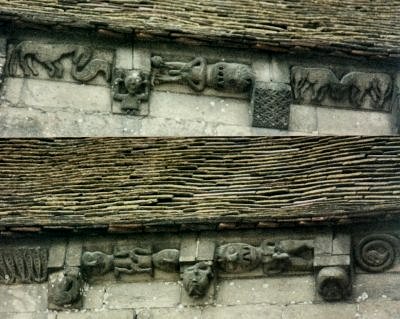
...and Etton near Beverley, East Yorkshire.
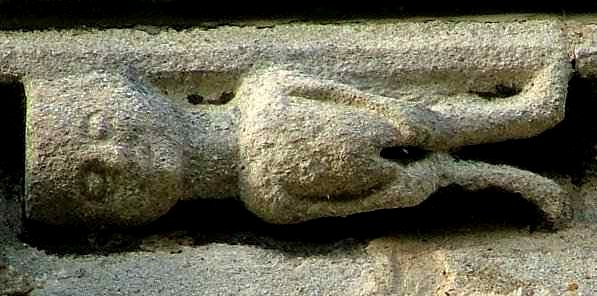
This was one of the earliest figures to be 'identified' as a sheela-ny-gigg.
The term first appears (twice) in 1840 in Volume II of the Ordnance Survey Letters of John O'Donovan, pages 541-549.
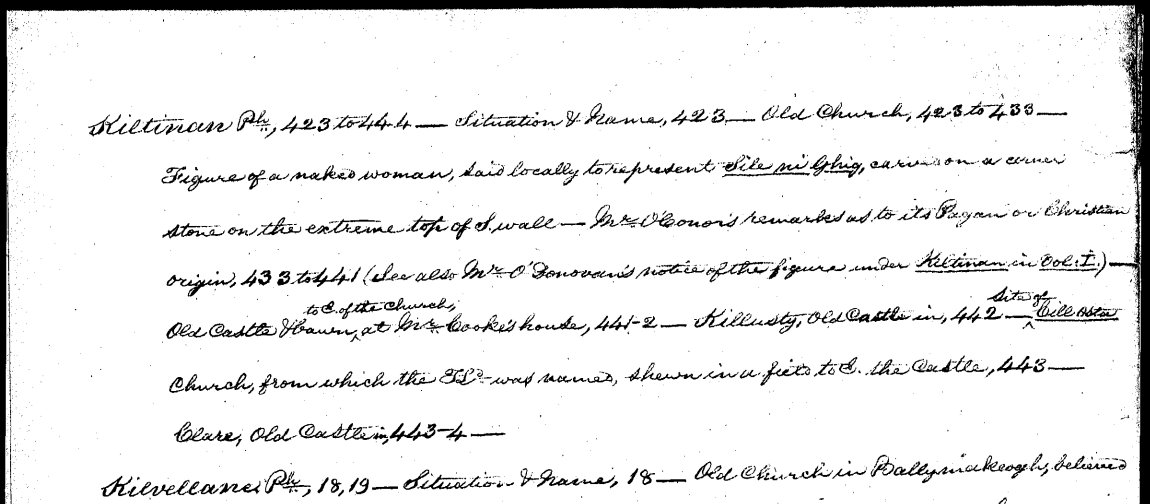
Mention of the Kiltinan figure by John O'Donovan.
"Kiltinan
- Figure of Sheela-Ny-Gigg spoken of by Mr [....]
sculptured in corner stone in W gable of Kiltinan Old Church near Fethard.
Said by tradition to have been set up to annoy the [....)
Similar figure on a corner stone of Ballyfinboy
old castle near Borrisokane,
and also on Castle of Shane in Queen's Co. [Offaly] [....]
see the figure of sheela-ny-gigg mentioned by Mr O'Conor under Kiltinan Pk in
Vol II."
His colleague, Thomas O'Conor, described and pondered thus on the same figure :
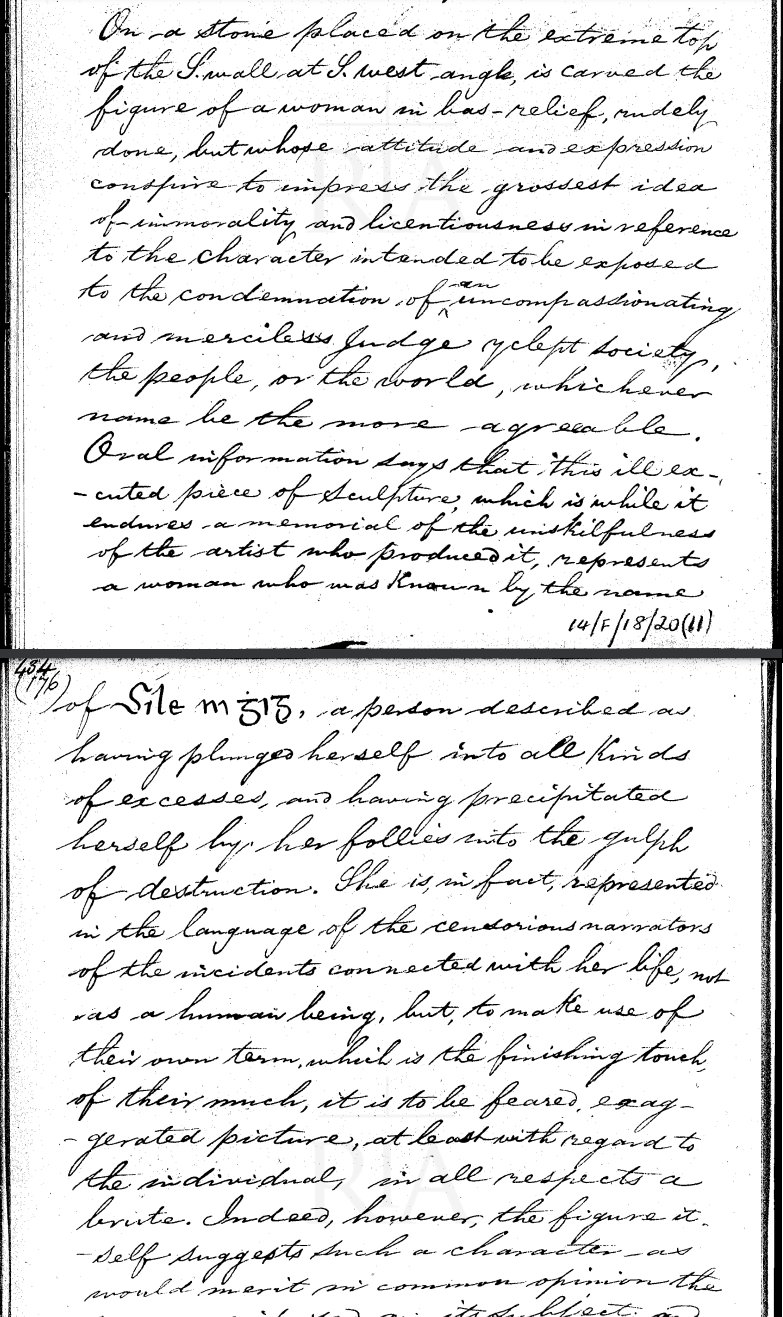
The
above is part of a nine-page disquisition on the previously-unrecorded phenomenon.
Click to read the complete text here.
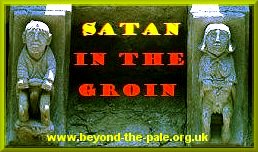
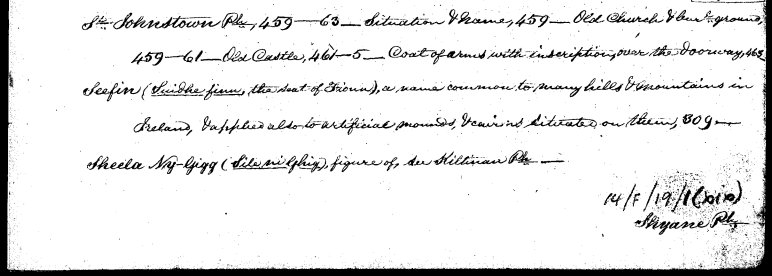
Entries in O'Donovan's
index.
It was not far
away from Kiltinan[e] that the name first arose in the mid-19th century, when
a local man
was reportedly asked about a 'lewd figure' on the ruined church at Rochestown.
His mumbled reply to the antiquarian was recorded as: It's just an oul' sheela-na-gig.
He might equally have said: It's just an oul' thingumajig.